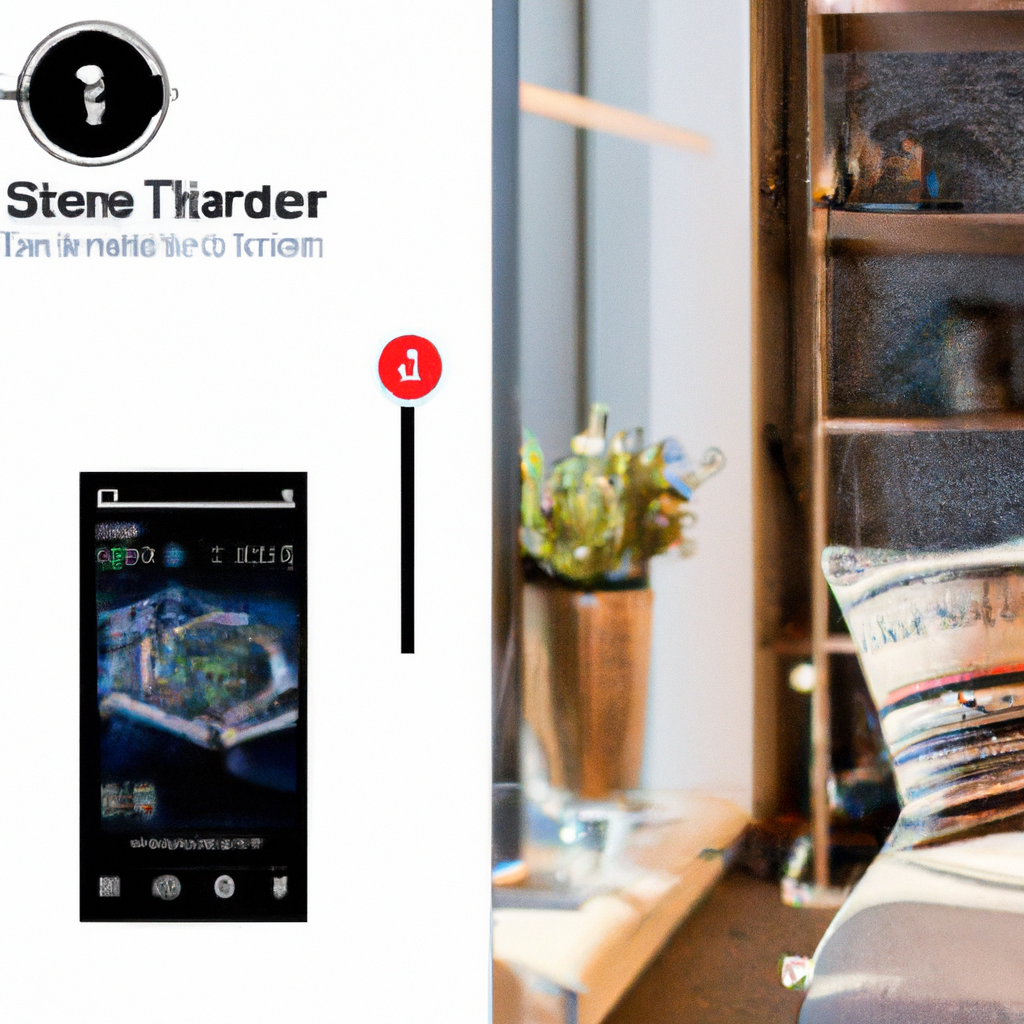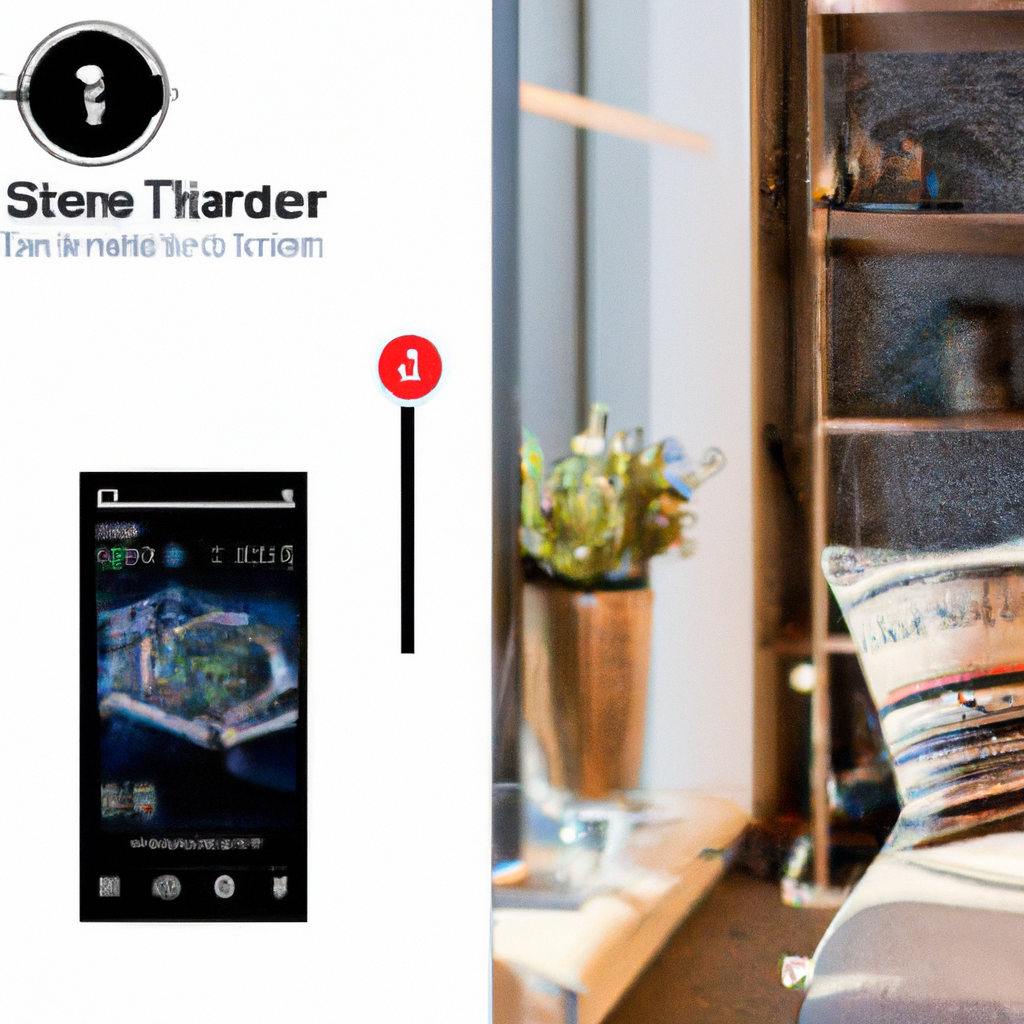Imagine being able to create the perfect climate in your living room with just a touch of a button. With the advancement of smart temperature sensors, this dream can now become a reality. These innovative devices allow you to monitor and adjust the temperature of your living room with ease, ensuring maximum comfort at all times. In this article, we will explore the various ways in which you can utilize smart temperature sensors to optimize your living room’s climate, from saving energy to improving air quality. Get ready to take control of your living space and enjoy the ultimate comfort experience.

1. What are Smart Temperature Sensors?
1.1 Definition
Smart temperature sensors are devices that measure and monitor the temperature in your living room. These sensors use advanced technology to provide accurate and real-time temperature readings, allowing you to maintain a comfortable and optimal climate inside your home.
1.2 Features
Smart temperature sensors come equipped with various features that enhance their functionality. Some common features include:
-
Temperature monitoring: These sensors accurately measure and display the current temperature in your living room.
-
Humidity detection: Many smart temperature sensors also have the ability to measure the humidity levels in the room, providing you with a comprehensive view of the indoor climate.
-
Air quality indicators: Some advanced sensors can also detect air quality indicators such as VOCs (volatile organic compounds) and CO2 levels, allowing you to ensure a healthier environment.
-
Connectivity options: Smart temperature sensors can connect to your home’s Wi-Fi network, enabling remote access and control through a smartphone app.
-
Voice control: Many sensors are compatible with voice assistants such as Amazon Alexa or Google Assistant, allowing you to control and monitor the temperature using voice commands.
1.3 Benefits
Using smart temperature sensors in your living room offers several benefits:
-
Comfort optimization: By monitoring the temperature and humidity levels, you can adjust your heating, cooling, or ventilation systems to maintain a comfortable environment in your living room.
-
Energy savings: Smart temperature sensors can help you identify energy-saving opportunities by providing data on temperature trends and patterns. This allows you to make informed decisions about adjusting your thermostat settings and optimizing energy usage.
-
Health and well-being: By monitoring air quality indicators, smart temperature sensors enable you to create a healthier living environment by detecting and addressing potential air quality issues.
-
Convenience and ease of use: With remote access and voice control capabilities, smart temperature sensors offer convenience and ease of use. You can monitor and control your living room’s climate from anywhere using your smartphone or voice commands.
2. Choosing the Right Smart Temperature Sensor
2.1 Room Size and Coverage
When choosing a smart temperature sensor, consider the size of your living room and the coverage area of the sensor. Larger rooms may require multiple sensors to ensure accurate temperature readings and optimal climate control.
2.2 Connectivity Options
Look for a smart temperature sensor that offers a reliable and secure connectivity option. Wi-Fi connectivity provides the flexibility of remote access and control through a smartphone app, allowing you to monitor and adjust the temperature settings even when you are away from home.
2.3 Compatibility with Smart Home Systems
Ensure that the smart temperature sensor you choose is compatible with your existing smart home system. Integration with popular smart home platforms such as Amazon Alexa or Google Assistant allows for seamless control and automation of your living room’s climate.

3. Installing Smart Temperature Sensors
3.1 Placement Considerations
Proper sensor placement is crucial for accurate temperature readings. Avoid placing the sensor near direct heat sources, drafts, or in areas with poor air circulation. Consider placing the sensor at a central location in your living room for optimal coverage.
3.2 Mounting Options
Most smart temperature sensors come with the option of either wall mounting or freestanding placement. Wall mounting provides a more permanent and centralized location for the sensor, while freestanding placement allows for flexibility in moving the sensor around if needed.
3.3 Syncing with Smart Home Devices
Before installation, ensure that your smart temperature sensor is properly synced and connected to your smart home system. Follow the manufacturer’s instructions to connect the sensor to your Wi-Fi network and integrate it with your smart home platform.
4. Understanding the Data
4.1 Temperature Readings
Smart temperature sensors provide real-time temperature readings, allowing you to monitor the temperature of your living room accurately. These readings help you determine if the room is too hot or too cold and make adjustments accordingly.
4.2 Humidity Levels
In addition to temperature, some smart temperature sensors also measure humidity levels. Monitoring humidity is important as it affects indoor air quality and comfort. High humidity can lead to mold growth and discomfort, while low humidity can cause dryness and respiratory issues.
4.3 Air Quality Indicators
Advanced smart temperature sensors may also provide air quality indicators such as VOC levels and CO2 levels. These indicators give you insights into the overall air quality in your living room, allowing you to take measures to improve air circulation and ventilation if needed.

5. Setting up Automated Climate Control
5.1 Creating Temperature Zones
Smart temperature sensors can enable you to create temperature zones in your living room. By dividing the room into zones, you can customize the temperature settings for different areas, ensuring optimal comfort for everyone in the room.
5.2 Scheduling Temperature Changes
Take advantage of the scheduling feature offered by smart temperature sensors. Set up a temperature schedule based on your daily routine, ensuring that the temperature automatically adjusts to your desired settings at different times of the day.
5.3 Integration with Voice Assistants
Integrate your smart temperature sensors with voice assistants such as Amazon Alexa or Google Assistant. This allows you to control and adjust the temperature using voice commands, providing a hands-free and convenient experience.
6. Monitoring and Analyzing Climate Trends
6.1 Analyzing Temperature Data
Use the temperature data provided by your smart temperature sensors to analyze climate trends in your living room. Over time, you can identify patterns and make informed decisions about temperature settings and adjustments to optimize comfort and energy efficiency.
6.2 Identifying Energy Saving Opportunities
By analyzing the temperature data, you can identify energy-saving opportunities. Look for patterns of temperature fluctuations and adjust your heating or cooling systems accordingly. This can result in substantial energy savings over time.

7. Troubleshooting and Maintenance
7.1 Sensor Calibration
Periodically check and calibrate your smart temperature sensors to ensure accurate temperature readings. Follow the manufacturer’s instructions for calibration, as each sensor may have different calibration procedures.
7.2 Battery Replacement
If your smart temperature sensor is battery-powered, make sure to replace the batteries as needed. Regularly check the battery status and replace batteries promptly to ensure uninterrupted monitoring and control of your living room’s climate.
7.3 Software Updates
Stay up to date with the latest software updates for your smart temperature sensors. Software updates often provide bug fixes, performance improvements, and new features, ensuring optimal functionality of your sensors.
8. Tips for Optimizing Your Living Room’s Climate
8.1 Using Curtains and Blinds
Use curtains or blinds to manage sunlight and heat in your living room. During hot summer days, close the curtains or blinds to block out direct sunlight and prevent excessive heat from entering the room. In colder months, open them to allow natural sunlight to warm up the space.
8.2 Maximizing Natural Ventilation
Take advantage of natural ventilation to regulate the temperature in your living room. Open windows and doors strategically to allow fresh air to circulate, especially during cooler evenings or early mornings. Use fans to enhance air circulation, if necessary.
8.3 Utilizing Heating and Cooling Appliances
Supplement your smart temperature sensors with heating and cooling appliances such as space heaters or fans. These appliances can provide additional targeted heating or cooling in specific areas of your living room, ensuring optimal comfort.

9. Privacy and Security Considerations
9.1 Data Encryption
Ensure that the smart temperature sensors you choose offer data encryption to protect your sensitive information. Encryption prevents unauthorized access to the sensor’s data and ensures the privacy and security of your personal information.
9.2 Secure Network Connection
Secure your Wi-Fi network to prevent unauthorized access to your smart temperature sensors. Use strong and unique passwords for your network, enable network encryption such as WPA2, and consider using a firewall to add an extra layer of security.
9.3 Privacy Policies
Review the privacy policies of the smart temperature sensor manufacturer before purchasing the devices. Ensure that the company has clear policies and practices in place to protect your privacy and handle your data responsibly.
10. Integration with Other Smart Home Devices
10.1 Smart Thermostats
Consider integrating your smart temperature sensors with a smart thermostat. The combination of both devices allows for more precise temperature control and automation, resulting in enhanced energy efficiency and comfort.
10.2 Smart Lights
Integrate your smart temperature sensors with smart lights to create a comprehensive and holistic smart home experience. By linking temperature readings to your lighting system, you can automatically adjust the light intensity and color temperature based on the room’s temperature, enhancing both comfort and energy efficiency.
10.3 Smart Window Shades
Link your smart temperature sensors with smart window shades or blinds for enhanced climate control. By integrating the sensors with your window shades, you can automate the adjustment of the shades based on the room’s temperature, optimizing natural light and heat management.
